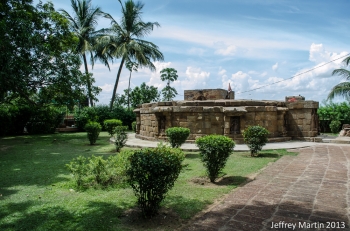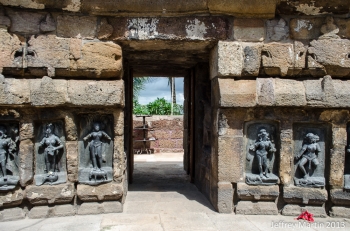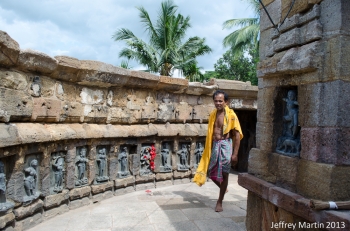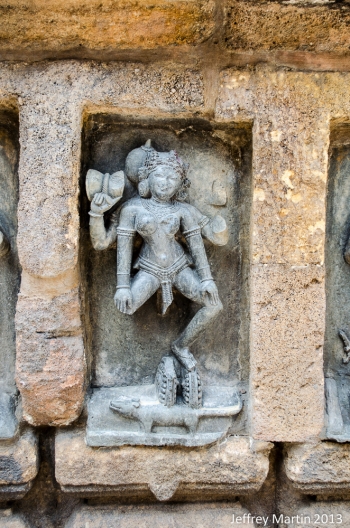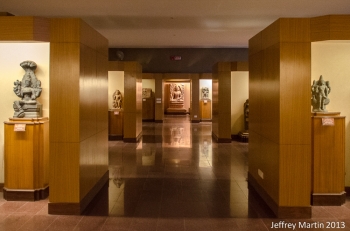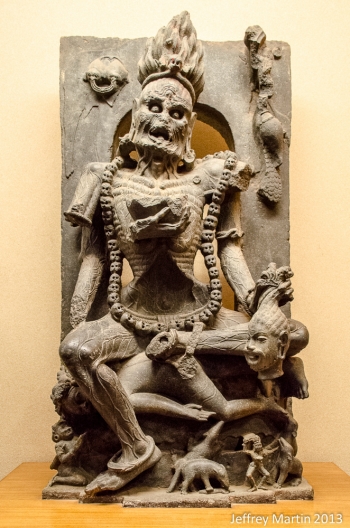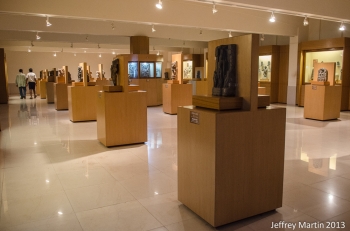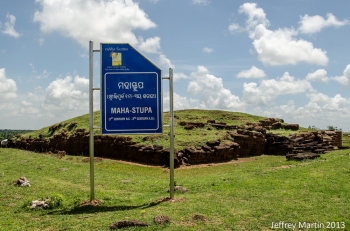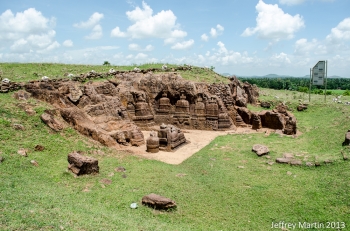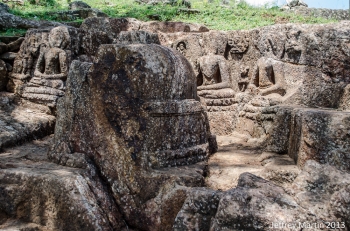Vajrayana is associated in Buddhist history and legend with the locale of Uddiyana, ruled by wise kings who first practiced tantra after being introduced to it by Shakyamuni Buddha. In his detailed analysis of Odishan Buddhist iconography, Indian art scholar Thomas Donaldson argues that none of the deities associated with Uddiyana can be traced to the northwest and that while images associated with early Tantrism are abundant in Orissa, they are rare in Swat valley. Some of these images can be seen at temples not associated with Buddhism, such as the Hindu temple of 64 Yoginis, just outside Bhubaneswar on the way to Dhaulagiri. A product of the middle ages, the temple was once associated with a sacrificial cult.
Tantric images are also in abundance at the Odisha State Museum in Bhubaneswar. This is a typical Indian museum, a nondescript institutional building in need of repair and a good cleaning. Exhibits don’t appear to be updated often, if at all. There is no air-conditioning and the most noticeable smell is must and dust. Glass cases are festooned with fingerprints. The stuffed animals looked stuffed and the dioramas of ancient village life leave much to the imagination. Still, the collection of stone statuary is impressive and is worth the meager admission price. Those who can’t make it to Odisha may find examples of Buddhist Triangle art in museums of Patna, Kolkata, Dehli and even Toronto, New York, and Paris.
Odisha is still not connected to the international flight network, though this may happen by the end of 2013 or early 2014. For now visitors must fly through Kolkata, Dehli or Mumbai, all flights of about one hour. Odisha has recently been added to the journey of the biannual Mahaparinirvana Express, a charter train route crossing north India and stopping at most major Buddhist pilgrimage sites.
While a number of local tour operators offer trips to the Buddhist Triangle, none of them appear as yet to offer guides specializing in Buddhist culture and history. Even so, one company this author can personally recommend is Grass Routes. I had a chance to travel with the owner, Pulak Mohanty, an Odishan with wide travel experience outside India who is passionate about building sustainable tourism in his home state. Grass Routes specializes in visits to out-of-the-way villages, giving the tourist a taste of authentic Indian rural life, and a chance for the people of Odisha to have meaningful interactions with foreign visitors. During our tour of the Buddhist Triangle, we did a walk through the village at Ratnagiri, where we shared tea and conversation with the locals, who related stories about the excavation and development of the archeological site.
A summer visit is hot, sticky and wet, requiring hats, umbrellas, sunscreen and a few extra t-shirts. But as the photos here hopefully show, a summer visit offers distinct advantages: big blue skies, deep green rice paddies and grass lands, and no crowds. As it’s off season, prices are also lower. My 2-day/1-night tour with Grass Routes included driver, guide, late-model air-conditioned Toyota Innova, admission to five archeological sites and museums, and one night at Toshali Resort for 10,000INR, approximately $160.00 USD.
You may notice during your visit that the Buddhist sites of Odisha differ from those in other parts of India in their lack of a living monastic presence. The citizens of Odisha are largely Hindu and it appears there are no active viharas in the state. The introduction of a Tibetan cultural center at Langudi will be a welcome change and perhaps serve to draw more Buddhist tourists interested in making contact with living Buddhists, not just ancient archeological sites. For the time being, though, potential visitors may recall one other important connection of Odisha to Buddhist history. The first lay followers of the sasana, Tapusa and Bhallika, were traders from Kalinga, who after meeting the Buddha travelled home to build stupas and other emblems of worship and thereby spread the teaching of the Buddha among the Kalingans.
Other entries in this series:
Puspagiri: The Odisha Circuit
Puspagiri: The Buddhist Triangle
Photo albums (external link):
Dhauligiri
Lalitgiri
Udayagiri
Langudi
Sixty-Four Yogini Temple
Odisha State Museum
